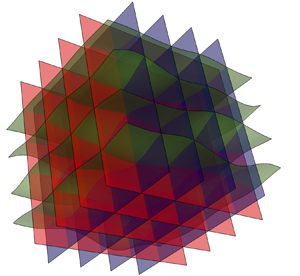Article contents
The Lagrangian kinematics of three-dimensional Darcy flow
Published online by Cambridge University Press: 11 May 2021
Abstract

Darcy's law is used widely to model flow in heterogeneous porous media via a spatially varying conductivity field. The isotropic Darcy equation imposes significant constraints on the allowable Lagrangian kinematics of the flow field and thus upon scalar transport. These constraints stem from the fact that the helicity density in these flows is identically zero and so the flow does not admit closed or knotted flow paths. This implies that steady Darcy flow possesses a particularly simple flow topology which involves streamlines that do not possess closed orbits, knots or linked vortex lines. This flow structure is termed ‘complex lamellar’ and consists of fully integrable (in the dynamical systems sense) streamlines which admit two analytic constants of motion and so preclude chaotic advection. In this study we show that these constants of motion correspond to a pair of streamfunctions which are single valued and topologically planar, and the intersections of the level sets of these invariants correspond to streamlines of the flow. We show that the streamfunctions and iso-potential surfaces of the flow form a semi-orthogonal coordinate system, that naturally recovers the topological constraints imposed on the Lagrangian kinematics of these flows. We use this coordinate system to investigate the impact of these constraints upon the kinematics of Darcy flow, including the deformation of fluid elements and transverse macrodispersion of solutes in the absence of local dispersion. These results shed new light on the relevance and limitations of isotropic Darcy flow as a model of transport, mixing and reaction in porous media.
JFM classification
Information
- Type
- JFM Papers
- Information
- Copyright
- © The Author(s), 2021. Published by Cambridge University Press
References
REFERENCES
- 5
- Cited by


